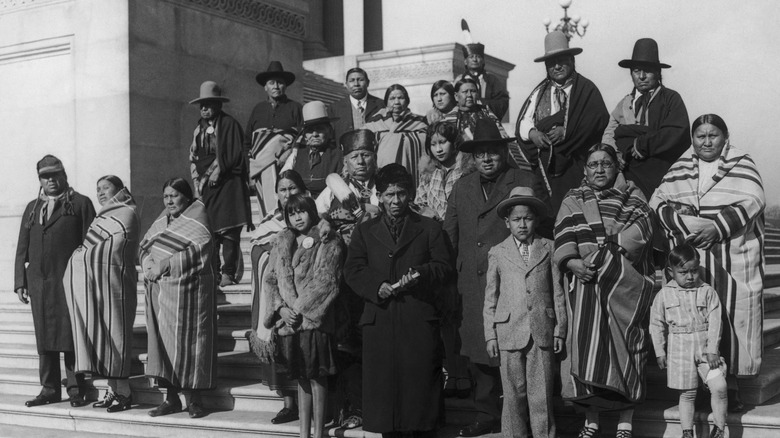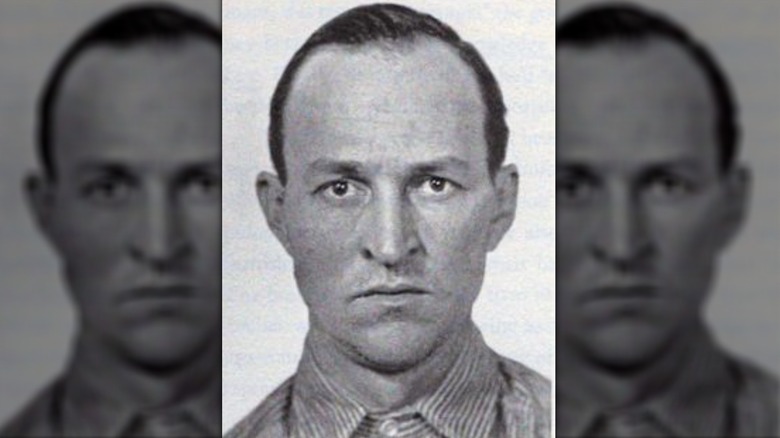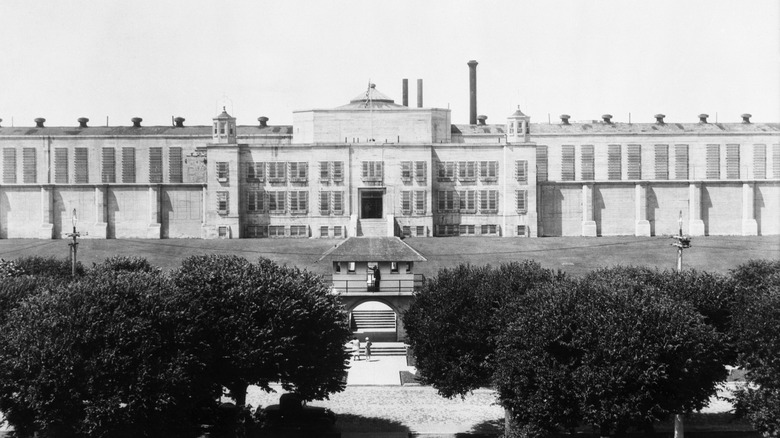Killers Of The Flower Moon: Whatever Happened To Byron 'Bryan' Burkhart?
Some crimes loom large in the American consciousness. Early outlaws like Jesse James and Billy the Kid and 20th-century gangsters like Al Capone and John Dillinger have become immortalized, as have some victims of unsolved murder, such as that of Elizabeth Short — the so-called "Black Dahlia." However, many brutal stories from the depths of history languish long forgotten until someone digs deep to recover them and bring them to a new audience. Such is the case of the Osage tribe murders, which took place between 1918 and 1931.
The criminal conspiracy behind the Osage murders of the 1920s was vast. Oklahoma rancher, politician, and businessman William Hale used friends, family, and associates to fulfill his criminal activities. Under his direction, some 60 or more Native Americans from the area's Osage tribe were killed in cold blood over the course of five years. The murders took place tactically to ensure the oil royalties of the victims fell into the hands of their white killers.
It took David Grann's 2017 book "Killers of the Flower Moon: Oil, Money, Murder and the Birth of the FBI" for the horrors of the Osage Tribe murders to be revisited by the general public. Grann outlined how Hale used his nephews, Ernest and Byron "Bryan" Burkhart, to commit cold-blooded murders purely for the sake of profit — and the latter never faced justice for his crimes.
The crimes of Bryan Burkhart
Byron "Bryan" Burkhart was implicated in the murder of Anna Brown, an Osage woman who was found dead in a ravine with a gunshot wound to the head, which suggested she had been executed. According to David Grann's "Killers of the Flower Moon," Brown was one of the first victims of the "Reign of Terror" against the Osage Indians. She was shot by a man named Kelsie Morrison after Bryan had purposefully gotten her drunk and led her to the execution site. He even sat her down on a rock by a creek before Morrison pulled the trigger.
What makes the story even more shocking is that Brown was the sister of Mollie Burkhart, Bryan Burkhart's sister-in-law through her marriage to his brother, Ernest. Bryan had even returned to the scene of the crime with Milly to identify Brown's body. It was later reported that William Hale and his nephews were also planning on murdering Mollie for the sake of inheriting her oil royalties, per the FBI.
He avoided prison
But despite the close family ties at the center of the Osage murder plot, Byron "Bryan" Burkhart proved willing to turn against both his uncle William Hale and his brother Ernest to save his own skin. After their murder trials, Hale and Ernest received life sentences. Hale was released after 21 years and was a free man for 15 before his death in 1962, while Ernest was paroled in 1937 and released again in 1959. Meanwhile, Bryan Burkhart never went to prison after turning on his relatives and testifying against them and Kelsie Morrison in exchange for immunity from the prosecution.
Little is known of the details of Bryan Burkhart's later life, except that he was a free man after cooperating with the investigation of the Osage murders. According to Find a Grave, Burkhart lived to be 86 years old. He remained in Oklahoma for the rest of his life and was buried in Fairfax Cemetery in Osage County, shortly after his death on July 22, 1985. According to Famous Trials, Burkhart spent his final years living in a trailer with his brother Ernest after he was released from prison in 1959.


